Lapland Souvenirs: 12 Thoughtful & Unique Gifts from Finnish Lapland
Finnish Lapland is a region of untamed beauty, one that’s a bucket list wish for many people. The magic of life above the Arctic Circle is hard to express, especially its pristine landscapes and dazzling Northern lights displays.
Getting here is a trek, but it’s worth the effort, and many travelers don’t want to end their trip to Finnish Lapland without some mementos from their time in Finland. That leaves many travelers to Arctic Finland wondering: what even are some good Lapland souvenirs?
Whether you’re shopping for yourself to keep the memory of the Arctic alive or you’re bringing a slice of Lappish tradition back home to loved ones who couldn’t join you, this guide to Lapland souvenirs and gifts will be a good starting point.
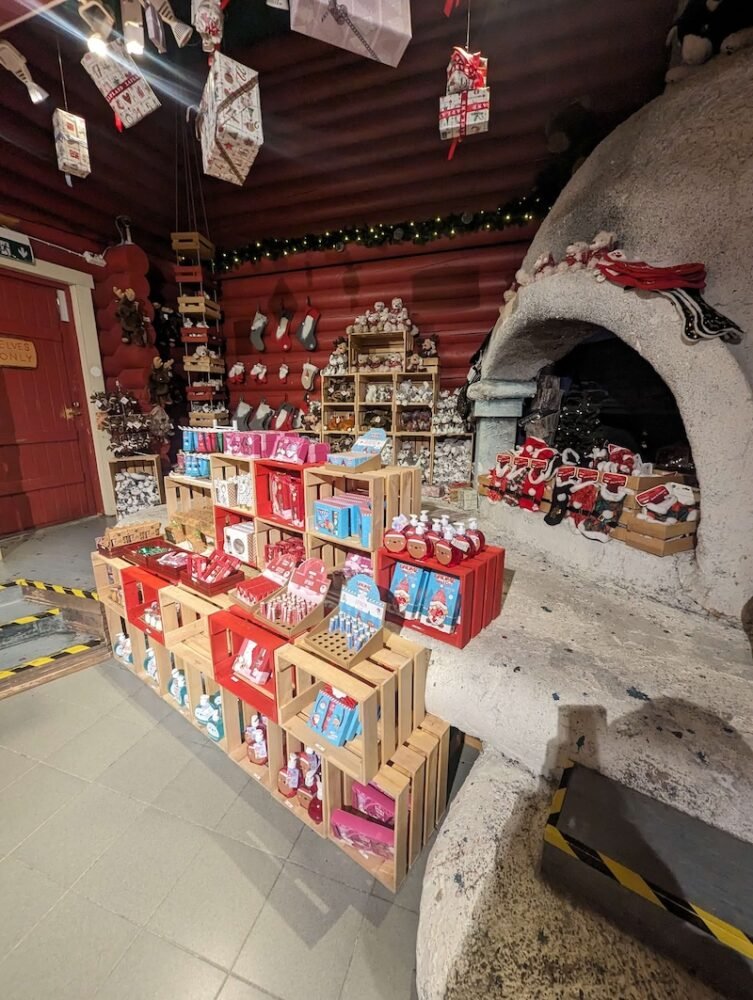
This guide goes beyond fridge magnets and postcards, because really, do you need me to tell you to buy that? Rather, I’m writing this guide to bring you ideas for actually meaningful gifts from Finland that go beyond the conventional.
This Lapland souvenir guide is focused on highlighting items that embody the sustainability, craftsmanship, and traditions of Lapland, including products that are eco-conscious, Nordic inspired, and influenced by the Sámi culture of the northernmost reaches of Europe.
You can find these gifts in downtown Rovaniemi, in many boutiques and shops in ski resort towns like Ruka and Levi, and even the Rovaniemi airport is a surprisingly great place to souvenir shop!
Sámi handicrafts
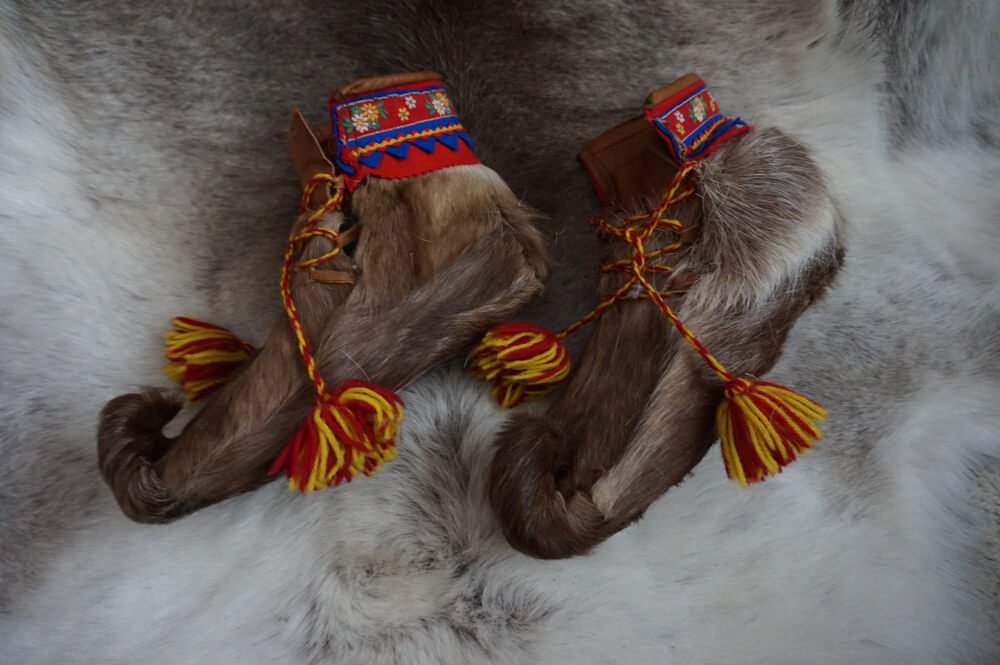
Duodji is the word for Sámi artisan crafts made in traditional ways by the indigenous Sámi people.
The crafts are regulated in Finland, so that only items marked Sámi Duodji (fully handmade by Sámi artists) or Sámi Made (designed by a Sámi artist, but not necessarily handmade) are authentic.
Unfortunately, a lot of cheap manufacturers have ripped off Sámi intellectual property designs and stripped them of their meaning. This is particularly egregious as Sámi clothing has very special significance specific to a family, area of origin, etc. Items crafted by actual Sámi artists will not infringe on these special significances, but IP thieves stealing from Sámi people will.
If you want to buy Sámi designs and ensure you are appreciating the culture rather than appropriating it, look for items marked either Sámi Made or Sámi Duodji.
Now that I’ve finished my little rant, let’s talk about what Sámi designs actually are. They include a wide variety of crafts, but some of the most famous are embroidered ribbon work, reindeer-hide shoes, and more.
To get an idea of what Sámi crafts look like, you can check them out here, but note that buying these online will be a lot more expensive than buying them from a Sámi artist in Finland.
Reindeer-based snacks

One of the most quintessential ingredients in Finnish cuisine is reindeer. Yes, reindeer! While you can’t exactly bring back a perfectly-cooked reindeer steak, you can bring home a little Lappish reindeer in a more, uh, travel-friendly format.
At the smallest of grocery stores and even at the airport, you can buy reindeer-based meat products, like reindeer pâté and reindeer jerky. Depending on what country you are going to, these transport well and don’t need to be refrigerated for transit!
However, if you are traveling overseas on your way back from your Finland adventure, you may not be able to bring meat products back through customs. Keep this in mind if your country is particularly strict about these things!
Reindeer pelt rugs

The Sámi people, who both historically and in present-day make a living off of reindeer husbandry, don’t waste any part of the animal. Accordingly, reindeer pelts are proof of this important ethos, which is about taking no more than you need from the land.
Reindeer have been domesticated by the Sámi people in Northern Finland (and Sweden and Norway and the Kola Peninsula of Russia too) for thousands of years. Why? Despite the rugged conditions of life in the Arctic, reindeer are easy to raise sustainably, as they live nomadically outdoors, being herded and tended to by their Sámi guardians.
While for others, reindeer may seem like a rare thing to eat, reindeer is one of the most commonly eaten meats in Finland, and particularly in Finnish Lapland, because it’s incredibly sustainable.
Since reindeer is eaten so often, it’s not surprising that reindeer pelts are a natural byproduct of that — and you can buy a gorgeous reindeer pelt at all sorts of shops and also the airport! I’m an omnivore who doesn’t purchase fur, and I think reindeer pelts are fine for non-vegetarians and non-vegans, as these pelts result from existing meat consumption rather than from a demand for luxury products.
For a reference on price, as of 2025, a small area rug made from a single reindeer pelt typically costs between 150-200 Euro.
Christmas ornaments
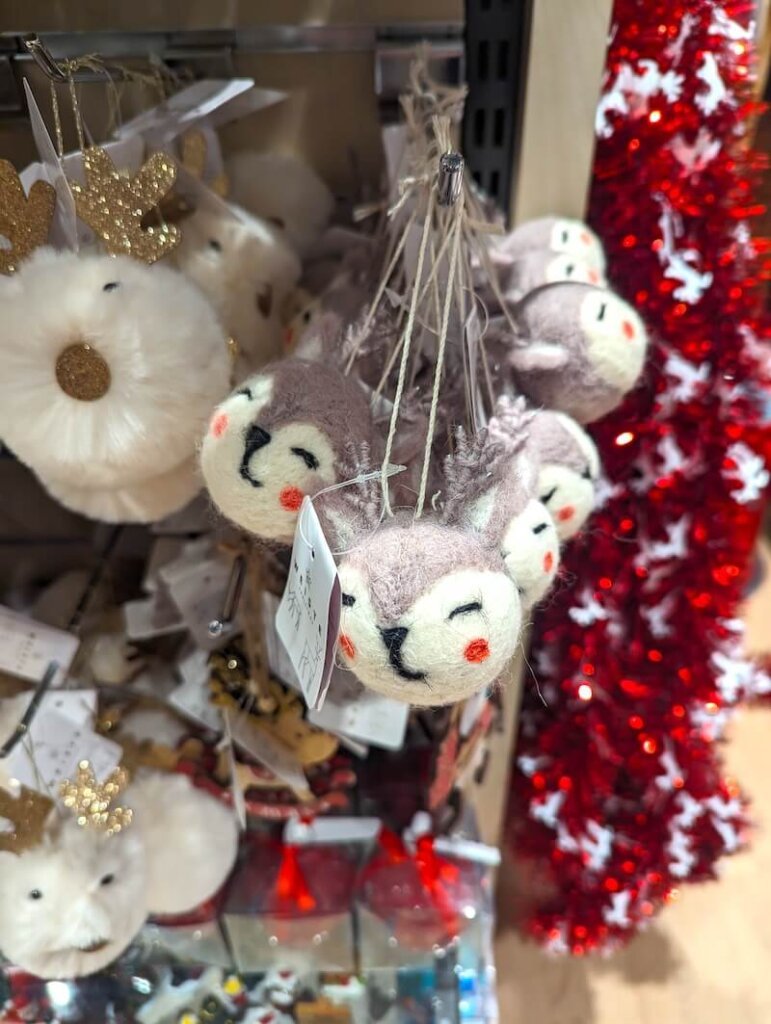
Since Rovaniemi is home to Santa Claus Village, it’s not surprising that a lot of Lapland souvenirs are focused on the Christmas season. And what better way to remember your trip to Finnish Lapland for years to come than by having an ornament you’ll reach for every year?
If you’re visiting after the Christmas holidays (as I did, since my most recent winter visit was spanned both January and February), don’t worry — it’s always Christmas in Santa Claus Village.
All throughout Santa Claus Village, as well as downtown Rovaniemi, you’ll find adorable Finnish-themed ornaments. These are great to put on your tree this year and for many years to come, always evoking the memory of Lapland in winter!
Camping cups
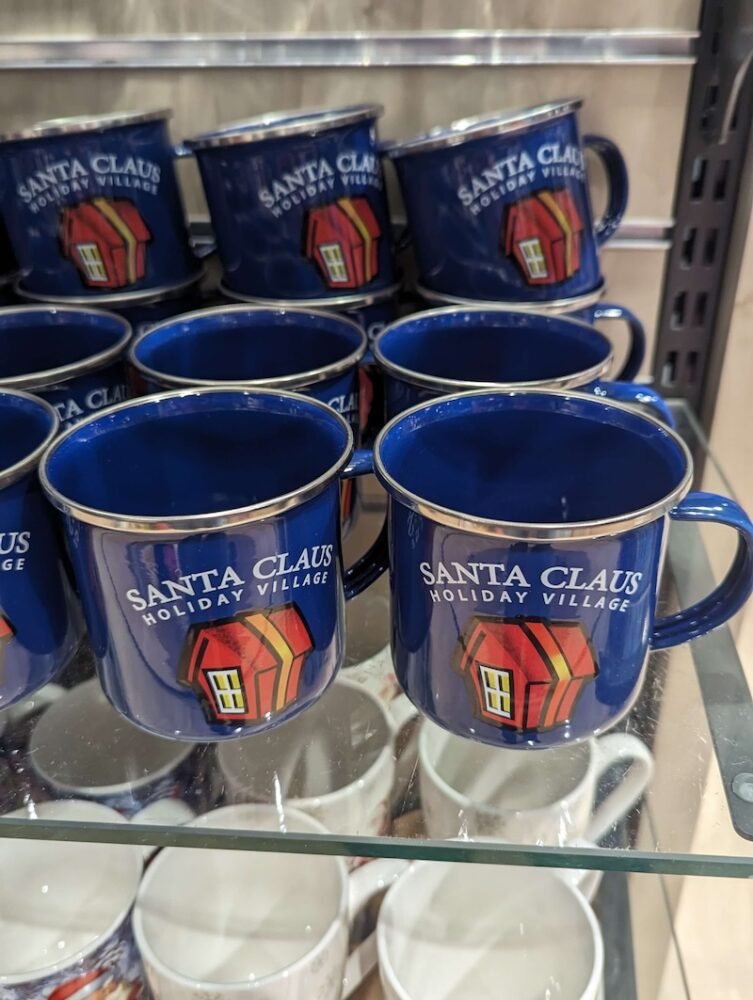
One of the most popular souvenirs in Nordics are metal cups that are perfect for camping and backpacking.
Since they’re metallic, these cups are very durable, easy to toss in a bag or clip from a carabiner on a backpack, the true Nordic way.
Finnish wooden cups (Kuksa)
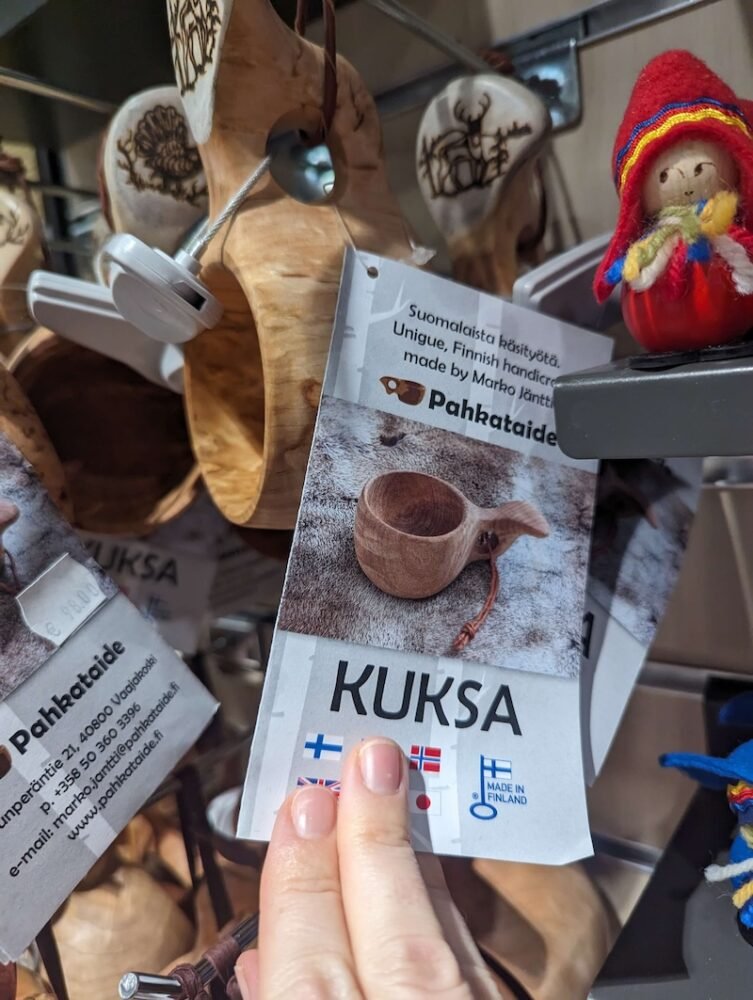
For a more Finland-specific souvenir, there is a unique kind of cup that is made from birch burl, called kuksa when they’re turned into cups.
Essentially, a burl (a large mass) on a birch tree is cut off, which doesn’t harm the tree at all, as it’s almost like a benign growth on the tree. This knot grows in a circular fashion, with lots of pulpy fibers.
Rather than carving the cup with a knife and disrupt the natural layers, fibers, and structure of the knot, the cup is hand-“carved” by removing strands of pulp one-by-one, until only a bowl or a cup remains. It’s a really interesting process; you can read more about it here.
This takes a lot of work and can only be done by hand, so expect these cups to cost upwards of 50 Euro per cup, and sometimes closer to 100 Euro.
There are cheaper versions that sell for around 20 Euro per cup. They look similar but don’t have the same design process, history, or durability. These are a good compromise if you want the aesthetic, but just be aware that they are made of wood composite and aren’t traditional Finnish souvenirs but rather a product of the modern era.
If your budget allows and this is the kind of item you want to buy, I recommend buying an authentic kuksa from a birch burl to support this ongoing tradition.
Handicrafts are always an endangered custom in our modern time, which focuses on quantity and “value” over durability and tradition. When possible, support an authentic craft!
Wool garments

Wool is the only way to get through a Finnish winter… trust me! Honestly, I resisted wool for the longest time as I found it quite itchy, especially since I am neurodivergent, and sensory sensitivity is a large part of my disability.
But what I never learned was how to properly layer wool: the softest and finest knit possible on the bottom layer, and then you have a nice barrier for more thick-knit wools. I only wear Kari Traa merino wool base layers. These also make fantastic gifts from Lapland!
Technically, they’re a Norwegian brand, but the love for Kari Traa is pan-Nordic: you’ll find them in plenty of stores in Lapland like Intersport, often on sale in January and onwards, which is when I invested in them!
But I’ll admit, wool base layers aren’t the most exciting gift from Lapland, even if they may be absurdly practical.
For a more traditional Lapland gift, you can get really cute, thick wool garments like socks, scarves, mittens (so much warmer than gloves!), and even thick wooly sweaters if the budget allows.
Finnish teas

The Finns love drinking coffee and tea… and let’s be real. How else are you going to get through an Arctic winter, which can have as few as zero hours of daylight per day in some parts of Northern Finland?
While Finland loves its coffee, it imports virtually all of it. While there are roasteries (with some especially lovely ones in Lahti), that’s not really maybe the most Finnish gift you can bring back.
Instead, I’d suggest bringing home some of the unique Finnish teas, which focus on ingredients grown and loved by Finns, like cloudberry, sea buckthorn, spruce, cranberry, and blueberry!
Antler candle holders
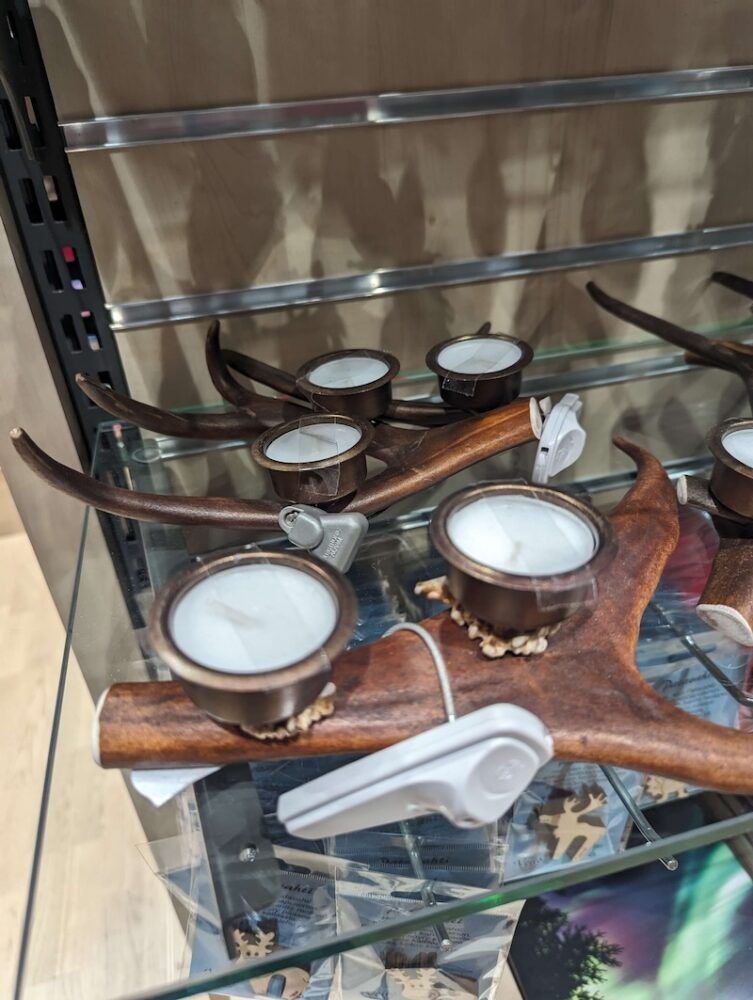
Another Northern Nordic design element that is quite popular is utilizing antlers in decor.
One affordable and portable example perfect for a souvenir from Lapland are things like these cute antler candle holders that are a perfect centerpiece for a tablescape.
Using reindeer antlers in decor is part of the Sámi and Finnish dedication to respecting the life of the animal by finding a use for every part of it.
That said, some of these antlers are recovered from reindeer who have just shed their antlers on the ground, so it’s not necessarily an animal byproduct in the same way that reindeer pelts are, so if you don’t feel good about pelts, antler-based crafts may be more suitable for you.
Moomin souvenirs
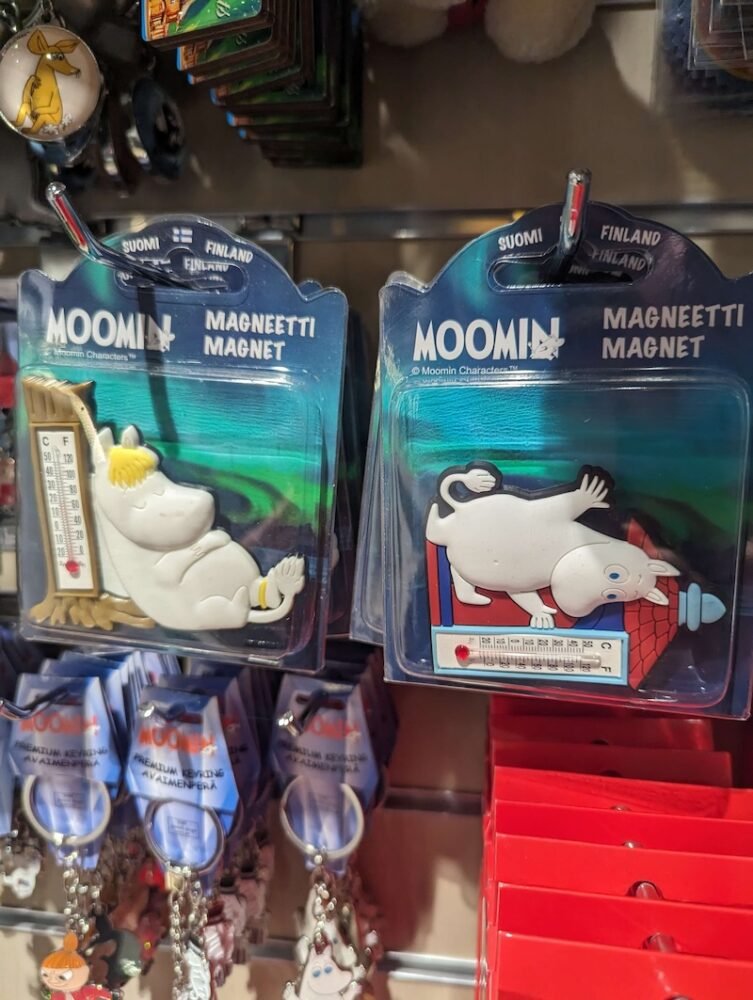
The popular children’s cartoon, Moomin, is a major point of Finnish national pride.In fact, there’s even an entire Moomin Museum in Tampere dedicated to this beloved animated figure!
You can buy all sorts of cute Moomin figurines, magnets, and other souvenirs — a perfect souvenir for kiddos, and one that is quintessentially Finnish, though it’s not necessarily evocative of Lapland in particular.
Reindeer leather products

Another reindeer item? It may seem like overkill but this shows just how essential reindeer are to Finnish life, and how little waste happens with traditional artistry of the region.
While some reindeer skins are turned to pelts, others are turned into leather, dyed, and turned into wallets and other leather goods.
Nordic skincare
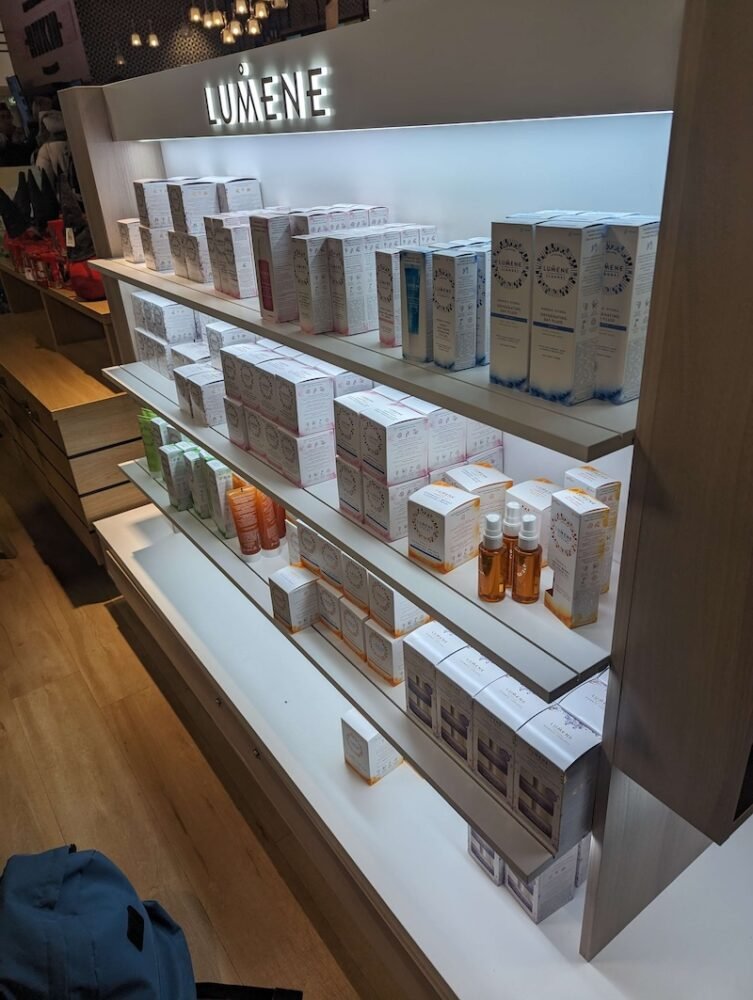
The Nordic region has great skincare brands, some of which you’re probably already familiar with from back home, like Ole Henriksen.
Look for unique brands that you can only find in Finland, like Lumene, which incorporate traditional, sustainable Finnish and Nordic skincare products that aren’t often found in other brands.
Some products in this vein would be their Nordic-C Arctic Berry Oil, a vegan serum made with cloudberries, cranberries, and lingonberries: packed with antioxidants and vitamin C!
Since Arctic conditions can be really hard on your skin (it’s unbelievably dry in the Arctic, I can attest), Nordic skincare brands really deliver on hydration!
Allison Green is a former teacher who has been travel blogging since 2016, visiting 75+ countries in total. She has a Masters in Teaching and a B.A. in English and Creative Writing. As a former educator, she merges her writing and educational experience to encourage ethical, sustainable travel. She has been a speaker at the World Travel Writers Conference and TBEX. Her writing, photography, and podcasting work has appeared in National Geographic, CNN Arabic, CBC Canada, and Forbes, amongst others. When she’s not on the road, she lives in Bangkok, Thailand.


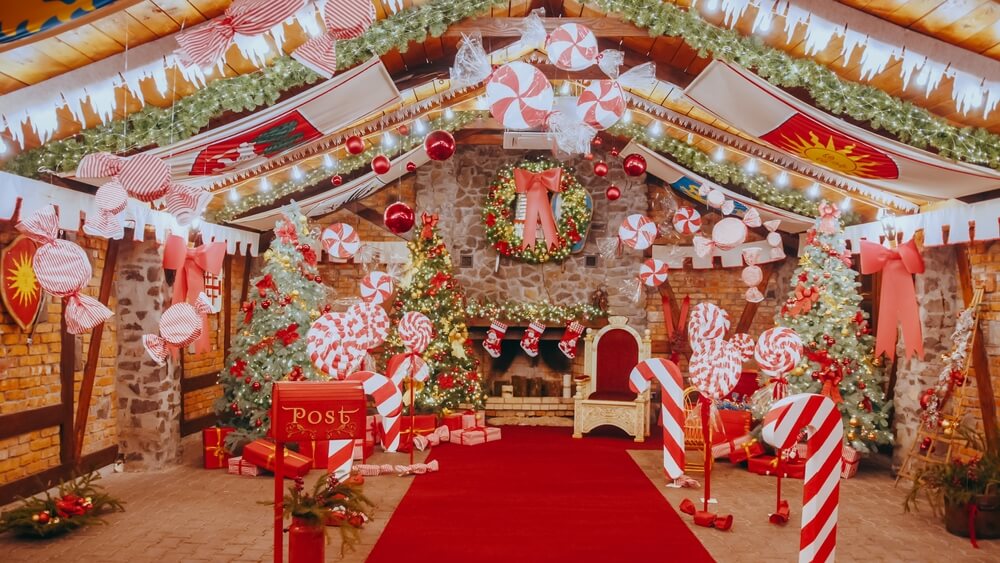
Thank you, this was just the info I was looking for! Headed to Finland in January and Im terrified of the cold but excited for the adventure.
Bring some wool layers and you will be all sorted! It isn’t as bad as you think it might be!